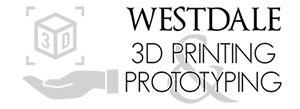Westdale 3D Printing & Prototyping was recently invited in Hamilton to talk on Jurgen Rudolph’s ‘Open Roll Podcast’ about 3D printing. The Open Roll Podcast features business owners and entrepreneurs to share their knowledge and experience across a full range of business ventures.
It was a tremendous podcast with Jurgen, he is such a fantastic host and is very enthusiastic about 3D printing. Links to the podcast, facebook and twitter are below:
Podcast:
http://openroll.org/060-talking-3d-printing-with-harrison/
Facebook:
https://www.facebook.com/jkrfinancial/
Twitter:
https://twitter.com/openrollpodcast
Harrison got into 3D printing by having to design an optical bench, about 3 years ago. For prototyping, you can make the exact prototype, have it tested by using 3D printing and go from there. It is an invaluable tool. With 3D printing you are only using what is required to make that one piece, there isn’t a large waste of resources. 3D printing is the successive layering of materials are either extruded or cured and the item created that way. The types of printers Harrison has in his shop are fused deposition modelling (FDM). A filament on a spool goes into an extruder which is then heated, an outline of the piece is laid down and filled in with the extruder – this is done layer by layer. The software the printer uses, slices it into layers and prints a layer at a time, fusing each layer to the one below, until it is done.
*Note:
PLA (PolyLactic Acid) is a biopolymer, i.e., a biodegradable plastic. It is made from renewable raw materials such as cornstarch or sugarcane. Aside from 3D printing, it is typically used for packaging material, plastic wrap, plastic cups and plastic water bottles. It is considered to be more ecologically friendly than ABS – after all, it’s made from plants.
ABS (Acrylonitrile-Butadiene Styrene) is an oil-based plastic. It is a tough material that can be used to create robust plastic objects for everyday use, for example in cars, electrical equipment or even in the popular Lego bricks
There is a new desktop machine that can print carbon fibre. The layers are a metal powder and the layers are cured with a laser. You would have a printed metal item. You can order items to be printed online if there isn’t a shop that prints what you want nearby. Low level manufacturing becomes highly accessible and cheap with 3D printing. And this can be done locally. In Peter Diamandis’ book Bold he talks about how the ability to 3D print things is going to change the world.
The RepRap community is all open-source. People can post their designs, and others can use them. This encourages people to improve on their designs. Things are no longer made in secret and kept to yourself, it is put out there, and can be backed by crowdfunding. The ideas are open and people can fund them. This is validation. Harrison says he loves 3D printing, from building the printer to making all different things – from his own stuff to prototyping. With regards to mechanical design 3D printing has helped him not just visualize, but become better at it. If you are designing something, that you can then print it, see it and hold it, the design abilities keep growing.


Recent Comments